Glass Design
It seems like there might be a slight confusion in your question. “Tuffen glass” likely refers to toughened glass, which is a type of safety glass that has been treated with heat or chemicals to increase its strength compared to regular glass. Toughened glass is known for its durability and safety features, as it shatters into small, relatively harmless pieces when broken.
If you’re looking for design ideas or applications for toughened glass, here are a few suggestions and images.
Images
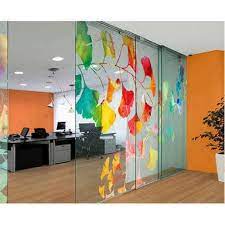
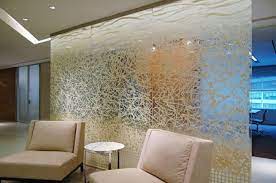
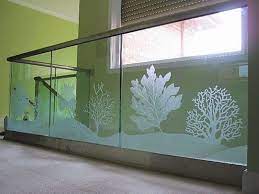
Architectural Elements:
- Doors and Windows: Toughened glass is often used in doors and windows for both residential and commercial buildings.
- Glass Facades: It can be used in building facades to create a modern and sleek appearance.
Furniture:
- Tabletops: Toughened glass is commonly used for tabletops, providing a transparent and elegant surface.
- Shelves: Glass shelves, especially in cabinets or display cases, can add a touch of sophistication.
Home Decor:
- Partitions: Glass partitions can create separate spaces in a room while maintaining an open feel.
- Balustrades and Railings: Toughened glass is often used in staircase railings or balcony balustrades.
Automotive Industry:
- Car Windows: Toughened glass is used in car windows for safety reasons.
Electronic Devices:
- Screens: Some electronic devices, such as smartphones and tablets, use toughened glass to protect the screen from scratches and impacts.
Art and Decorative Pieces:
- Sculptures: Artists and designers sometimes use toughened glass to create unique sculptures or decorative pieces.
- Backsplashes: In kitchens or bathrooms, toughened glass can be used as a modern and easy-to-clean backsplash.
When working with toughened glass, it’s important to consider safety regulations and guidelines. The glass should be cut and processed before undergoing the toughening process, as it cannot be altered afterward.
If you have a specific aspect of toughened glass design in mind or if you’re looking for more detailed information, please provide additional details so I can offer more targeted assistance.
Glass Design For Window
Designing toughened glass for windows involves considering various factors such as size, thickness, safety requirements, and local building codes. Toughened glass, also known as tempered glass, is a type of safety glass that is processed to be more resistant to breakage than regular glass. When it does break, it shatters into small, relatively harmless pieces. Here are some considerations for designing windows with toughened glass:
Glass Thickness:
- The thickness of toughened glass depends on the size of the window and the specific requirements of the application. Thicker glass is generally stronger but also heavier.
- Common thicknesses for toughened glass windows range from 4mm to 12mm or more, depending on the size and purpose of the window.
Window Size:
- Larger windows may require thicker glass to withstand wind loads and other stresses. Consider consulting with a structural engineer to determine the appropriate glass thickness for the size of the window.
Safety Standards:
- Ensure that the toughened glass used in windows complies with relevant safety standards and building codes. Different regions may have specific requirements for glass safety, especially in areas prone to earthquakes or severe weather conditions.
Edge Finishing:
- The edges of toughened glass are the most vulnerable to breakage. Consider using polished or beveled edges to reduce the risk of breakage due to edge damage.
Window Frame Material:
- The type of material used for the window frame is important. The frame should be designed to support the weight of the glass and provide proper sealing to prevent water and air infiltration.
Installation:
- Proper installation is crucial for the effectiveness of toughened glass. It’s important to follow the manufacturer’s guidelines for installation, including the use of appropriate seals and glazing compounds.
UV Protection:
- Consider whether the window design needs to include UV protection to prevent the fading of interior furnishings. Some toughened glass products come with built-in UV protection.
Aesthetic Considerations:
- Toughened glass is available in various tints and colors. Consider the aesthetic requirements of the building and the desired level of transparency or privacy.
Maintenance:
- Consider the ease of maintenance. Some coatings can be applied to toughened glass to make it easier to clean and more resistant to scratches.
Local Climate:
- Consider the local climate when designing windows. In areas with extreme temperatures or frequent storms, the design may need to account for thermal stress or impact resistance.
Always consult with professionals, such as architects, structural engineers, and glass manufacturers, to ensure that the toughened glass design meets safety standards and building code requirements for your specific project.
Glass Design For Door
Designing a door with toughened glass involves considering several factors, including safety, aesthetics, and functionality. Toughened glass, also known as tempered glass, is a type of safety glass that is processed to be stronger and safer than regular glass. Here are some key considerations for designing a door with toughened glass:
1. Glass Type:
- Toughened Glass: Choose toughened glass for enhanced strength and safety. It shatters into small, relatively harmless pieces when broken, reducing the risk of injury.
2. Door Frame:
- Material: Select a strong and durable material for the door frame. Common materials include wood, metal, or a combination of both.
- Frame Design: The frame should provide adequate support for the toughened glass and complement the overall aesthetics of the door.
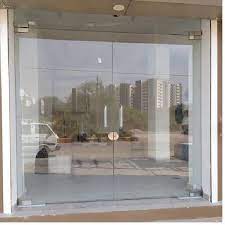
3. Glass Thickness:
- Thickness: The thickness of toughened glass can vary. Thicker glass provides more strength but also adds weight. Consider the door size and the visual aesthetics when choosing the thickness.
4. Door Design:
- Panel Configuration: Decide on the number of glass panels and their configuration. This can range from a single large glass panel to multiple smaller panels.
- Patterns or Frosted Glass: Consider using frosted or patterned glass for privacy while maintaining a modern and stylish look.
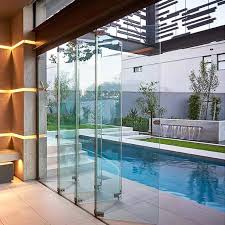
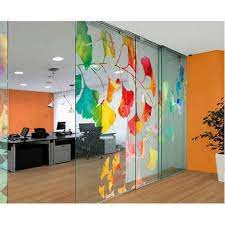
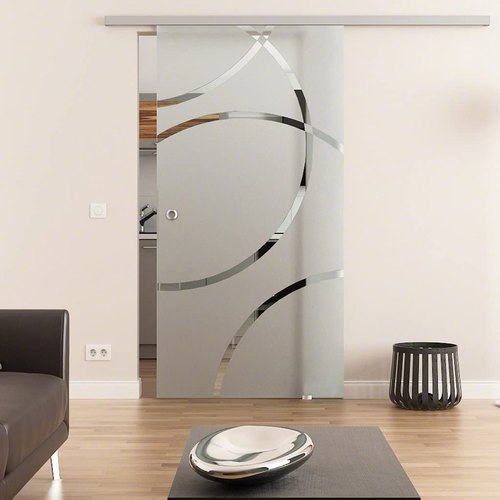
5. Hardware:
- Handles and Hinges: Choose high-quality and durable handles and hinges that can support the weight of the toughened glass door.
- Locking Mechanism: Select a secure locking mechanism that ensures the door is safely closed.
6. Safety Features:
- Safety Markings: Include safety markings on the glass to indicate that it is toughened and to provide information about the manufacturer.
- Smooth Edges: Ensure that the edges of the glass are polished to reduce the risk of injury.
7. Weather Resistance:
- Seals and Weather Stripping: Install effective seals and weather stripping to prevent water and air infiltration, especially if the door is an exterior door.
8. Compliance with Building Codes:
- Local Regulations: Ensure that the design and construction of the door comply with local building codes and safety regulations.
9. Installation:
- Professional Installation: Have the door installed by professionals to ensure proper alignment, secure attachment, and compliance with safety standards.
10. Maintenance:
- Easy to Clean: Design the door for easy maintenance, considering the cleaning and care of both the glass and the frame.
Remember that consulting with a professional designer or architect can be beneficial to ensure that the toughened glass door meets all safety standards and integrates well with the overall design of the space. Additionally, collaborating with a reputable manufacturer for the glass and door components is essential for quality and safety.
Glass Design For Partition In Office
Designing a partition using toughened glass for an office space involves considerations for both aesthetics and functionality. Toughened glass, also known as tempered glass, is a type of safety glass that is processed to be stronger and safer than regular glass. Here are some key factors to consider when designing a toughened glass partition for an office:
Purpose and Functionality:
- Identify the purpose of the partition. Is it for privacy, noise reduction, or simply aesthetic reasons?
- Consider the level of transparency needed. Some areas may require a fully transparent partition, while others might benefit from frosted or patterned glass for partial privacy.
Glass Type:
- Toughened glass is the primary choice for safety. It is more robust than regular glass and, if broken, shatters into small, less harmful pieces.
- Consider using laminated glass for added safety. Laminated glass is constructed with a layer of polyvinyl butyral (PVB) between two layers of glass, providing an extra layer of protection.
Frame Design:
- Decide whether the partition will have a frame or be frameless. Frameless designs offer a sleek and modern look but may require stronger support systems.
- If using a frame, consider materials such as aluminum or stainless steel for a contemporary appearance.
Height and Thickness:
- Determine the required height of the partition based on the desired level of privacy and the office layout.
- The thickness of toughened glass can vary. Consult with a structural engineer to determine the appropriate thickness based on the height and other structural considerations.
Door Integration:
- If the partition includes a door, ensure that the door design complements the overall aesthetics of the partition.
- Consider using a glass door with the same characteristics as the partition for consistency.
Finishes and Decorative Elements:
- Explore options for finishes and decorative elements. This could include frosted patterns, company logos, or even integrated lighting for added visual appeal.
Building Codes and Safety Regulations:
- Ensure that the design complies with local building codes and safety regulations.
- Verify that the glass meets safety standards and that the installation is done by professionals.
Maintenance and Cleaning:
- Consider the ease of maintenance and cleaning. Choose finishes that are easy to clean and maintain, especially in a busy office environment.
Collaboration with Professionals:
- Work with architects, interior designers, and structural engineers to ensure that the design meets both aesthetic and safety requirements.
Cost Considerations:
- Evaluate the cost implications of the chosen design. Consider not only the initial installation costs but also long-term maintenance and durability.
By carefully considering these factors, you can create a toughened glass partition that enhances the aesthetics of the office space while meeting functional and safety requirements.

